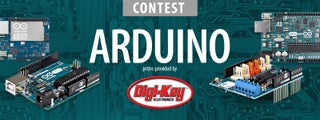Introduction: Simple Infrared LED and Photodiode Tester
This is a simple Infrared LED and Photodiode tester using Arduino-compatible microcontroller.
Purpose:
I received a new batch of IR LEDs and IR photodiodes. I need to test them before signing them off. I have limited tools at home. So I devised a simple test for the IR LEDs and the IR photodiodes using Arduino-compatible microcontroller. In my case, it was a Wemos D1 Mini R2 ESP8266.
Bill of Materials:
1 pack of IR LEDs to be tested
1 pack of IR photodiodes to be tested
1 Arduino-compatible microcontroller (Wemos D1 Mini R2)
1 Resistor 6k Ohm
1 Oled Screen (i2c) - optional
1 x 1.5V battery (LR44 coin cell)
1 x mobile phone with camera
Jumper wires
Step 1: Part 1: IR LED Test Rig
Can be used to test IR LED without any
other electronic components except a camera.
Turn off the lights.
Connect IR LED to the 1.5V battery. (Make a throwie or dupont M-F jumpers)
Aim IR LED to a white surface (e.g. paper).
Turn on phone camera and look through the camera at the IR LED.
You should see a pinkish or reddish light reflected on the paper.
Note: I used old LED strip connector (female) to to make it easier for me to switch LEDs.
Step 2: Part 2: Testing IR LED and Photodiode
This setup allows easier testing of both IR LED and IR photodiodes.
Connect the IR photodiode to an analog
input of an Arduino-compatible microcontroller. The photodiode should be connected to a pull-down resistor.
For mobility and ease of use, I also included an OLED screen to display the readings. The OLED screen is purely optional. You can just use your Serial Monitor on Arduino IDE to get your readings.
- Setup the electronics. I am using Wemos D1 mini R2 (ESP8266). But this works with UNO as well. See circuit diagram.
- Start up Arduino IDE.
- Load the code. https://github.com/cohlinn/WemosProjects/tree/master/IR
- Note the base reading. Mine was 1-2.
- Aim the IR LED from Step 1 above at the tip of the IR photodiode. The reading should increase.

Participated in the
First Time Authors Contest 2016

Participated in the
Arduino Contest 2016









